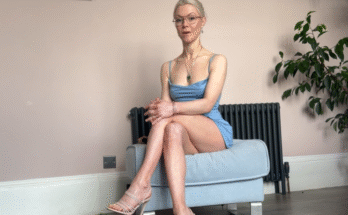In the quiet moments of life, when sadness seeps into our bones like cold rain through thin clothes, we often seek refuge in conversation, music, or solitude. But one of the most overlooked forms of emotional relief lies not in words or distractions, but in motion—specifically, the simple, intentional act of stretching. Stretching may seem like a purely physical endeavor, but its impact on emotional and mental well-being is profound. In stretching, we create space—not just in our muscles, but in our hearts and minds, gently guiding sorrow out of the corners where it likes to hide.



Understanding Sadness in the Body
Sadness is not just a feeling in the mind—it lives in the body. We slouch when we’re heartbroken. We carry tension in our necks and shoulders when we grieve. Our breath becomes shallow, and our limbs feel heavy. These physical manifestations are not merely symptoms; they are signals. The body speaks, and stretching gives us a way to listen and respond with compassion.



Science has shown that emotions are stored in the body. Trauma, grief, and stress often lodge themselves in our connective tissues and muscles. Stretching helps to release these tensions physically, which can in turn ease the emotional weight they carry. For instance, hip-opening stretches are known to release built-up tension, as the hips are considered a storage place for emotional stress in many holistic traditions. Similarly, gentle backbends can open the chest and heart area, counteracting the closed-off posture that often accompanies sadness.



The Healing Rhythm of Movement
Stretching offers us rhythm and routine, two powerful antidotes to emotional chaos. When life feels out of control, the structured flow of a stretching routine can bring grounding. The act of moving with breath—inhale, reach; exhale, fold—creates a meditative state that calms the nervous system. In this state, our minds can slow down, our thoughts can soften, and we can begin to feel safe within ourselves again.



This rhythm is also deeply personal. You don’t need to follow a strict yoga sequence or memorize elaborate poses. Simply sitting down on the floor, closing your eyes, and gently moving your body in a way that feels good can be enough. Reach your arms overhead. Roll your shoulders. Twist gently to each side. Lie on your back and pull your knees into your chest. These small movements can create a powerful shift in your internal landscape.


Stretching as a Form of Self-Compassion
One of the most important aspects of stretching is that it encourages us to be gentle. Unlike high-intensity workouts that push us to our limits, stretching invites slowness. It teaches us to pay attention—to breathe, to feel, to honor our boundaries. This practice of listening to our bodies and treating them with care mirrors the emotional care we so often neglect to give ourselves.
When we stretch with intention, we are saying to ourselves, “I am worth this time. I deserve to feel better.” This simple act of self-care can be deeply healing. In a world that often demands we ignore our feelings to keep functioning, taking a few minutes to stretch becomes a quiet act of rebellion. It is a way of reclaiming your own well-being.
Breathing Through the Pain
Sadness often brings with it a sense of suffocation—a feeling that we can’t quite catch our breath. Stretching and deep breathing go hand in hand, and together they can help unlock this tightness. As we stretch and breathe, we create more space within our bodies. With each exhale, we let go. With each inhale, we invite peace.
Try this: Sit on the floor in a comfortable position. Inhale slowly through your nose for a count of four. Hold your breath for four counts. Exhale through your mouth for four counts. As you do this, gently stretch your neck from side to side. Feel the release. Notice how just a minute of mindful breathing and movement can shift your energy. The sadness may not disappear, but it begins to loosen its grip.
Creating a Ritual
Incorporating stretching into your daily life doesn’t need to be complicated. It can be as simple as rolling out a yoga mat each morning, or ending your day with ten minutes of gentle movement before bed. What matters is consistency. By creating a ritual around stretching, you create a safe space—a personal sanctuary—where your emotions are welcome and your body is honored.
Over time, this ritual becomes more than just a habit. It becomes a lifeline. On days when sadness feels overwhelming, the knowledge that you have this quiet tool in your toolbox can be empowering. You don’t have to force yourself to feel better. You just have to show up for yourself. The rest will follow.
Stories of Stretching Through Sorrow
Many people have discovered the power of stretching during some of the darkest moments in their lives. A grieving mother might find solace in gentle yoga classes. A person navigating depression might stretch every morning as a way to reconnect with their body. A teenager struggling with anxiety might learn to calm themselves with a few deep breaths and a forward fold. These stories are not rare—they are testaments to the universal truth that movement heals.
In group settings, such as yoga studios or community classes, stretching can also offer connection. Being in a space with others, moving together, breathing together, creates a sense of shared humanity. Even in sadness, you are not alone. Even in stillness, there is movement.
Stretching Into a New You
Sadness is not something we can always avoid, nor should we. It has lessons to teach us—about love, about loss, about the fragility and beauty of life. But we don’t have to let it take over. We can stretch into the sadness, rather than run from it. We can meet it with soft shoulders and open hearts. And in doing so, we give ourselves the chance to stretch into something new—resilience, peace, and maybe even joy.
So the next time sadness knocks on your door, don’t rush to shut it out. Instead, roll out a mat or sit down in a quiet space. Close your eyes. Take a deep breath. Reach toward the sky, then fold toward the earth. Stretch slowly, gently, as if you are wringing the sorrow out of your muscles. Let each movement be a message: “I am here. I am healing. I am whole.”
In the end, stretching the sadness away isn’t about erasing emotion—it’s about moving with it, giving it space, and allowing your body to become a bridge back to yourself.



